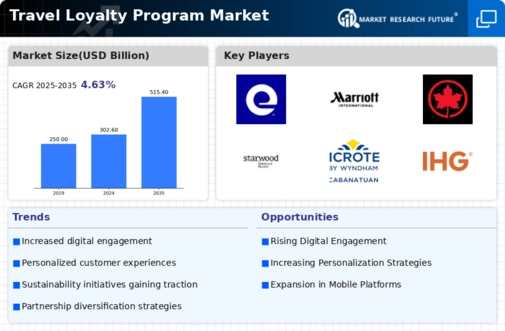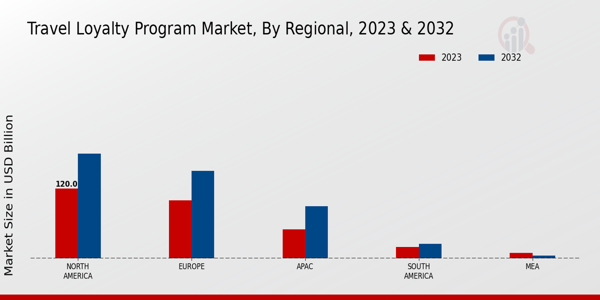Market Growth Projections
Partnerships and Collaborations
Strategic partnerships and collaborations are increasingly influencing the Global Travel Loyalty Program Market Industry. Companies are forming alliances with airlines, hotels, and other travel-related services to create comprehensive loyalty offerings. For example, a hotel chain may partner with an airline to allow customers to earn points across both platforms. This interconnectedness enhances the value proposition for consumers, encouraging them to engage with multiple brands. Such collaborations not only expand the reach of loyalty programs but also create a more integrated travel experience, thereby driving customer retention and loyalty.
Emergence of New Market Segments
The Global Travel Loyalty Program Market Industry is expanding due to the emergence of new market segments, particularly among younger travelers. Millennials and Generation Z are increasingly prioritizing experiences over material possessions, leading to a demand for loyalty programs that cater to their preferences. These segments are more likely to engage with brands that offer unique experiences, social media integration, and gamified loyalty rewards. As these demographics continue to travel and spend, loyalty programs that adapt to their preferences are positioned to thrive in the evolving market landscape.
Increasing Consumer Demand for Travel
The Global Travel Loyalty Program Market Industry experiences a notable surge in consumer demand for travel experiences. As disposable incomes rise and travel becomes more accessible, individuals are increasingly seeking loyalty programs that offer rewards and incentives. This trend is particularly evident in emerging markets, where a growing middle class is eager to explore new destinations. The industry's projected growth from 302.6 USD Billion in 2024 to 515.4 USD Billion by 2035, with a CAGR of 4.96% from 2025 to 2035, underscores the potential for loyalty programs to capitalize on this expanding consumer base.
Focus on Sustainability and Ethical Travel
The Global Travel Loyalty Program Market Industry is witnessing a shift towards sustainability and ethical travel practices. Consumers are becoming more conscious of their environmental impact and are seeking loyalty programs that align with their values. Travel companies are responding by incorporating sustainable practices into their loyalty offerings, such as rewarding eco-friendly travel choices or supporting local communities. This trend not only appeals to environmentally conscious travelers but also enhances brand reputation. As sustainability becomes a priority for consumers, loyalty programs that embrace these principles are likely to attract a growing segment of the market.
Technological Advancements in Loyalty Programs
Technological innovations play a pivotal role in shaping the Global Travel Loyalty Program Market Industry. The integration of mobile applications, artificial intelligence, and data analytics enhances customer engagement and personalization. For instance, airlines and hotel chains leverage these technologies to tailor offers based on individual preferences and travel history. This not only improves customer satisfaction but also fosters brand loyalty. As technology continues to evolve, the ability to provide seamless and personalized experiences is likely to become a key differentiator in the competitive landscape of loyalty programs.
























